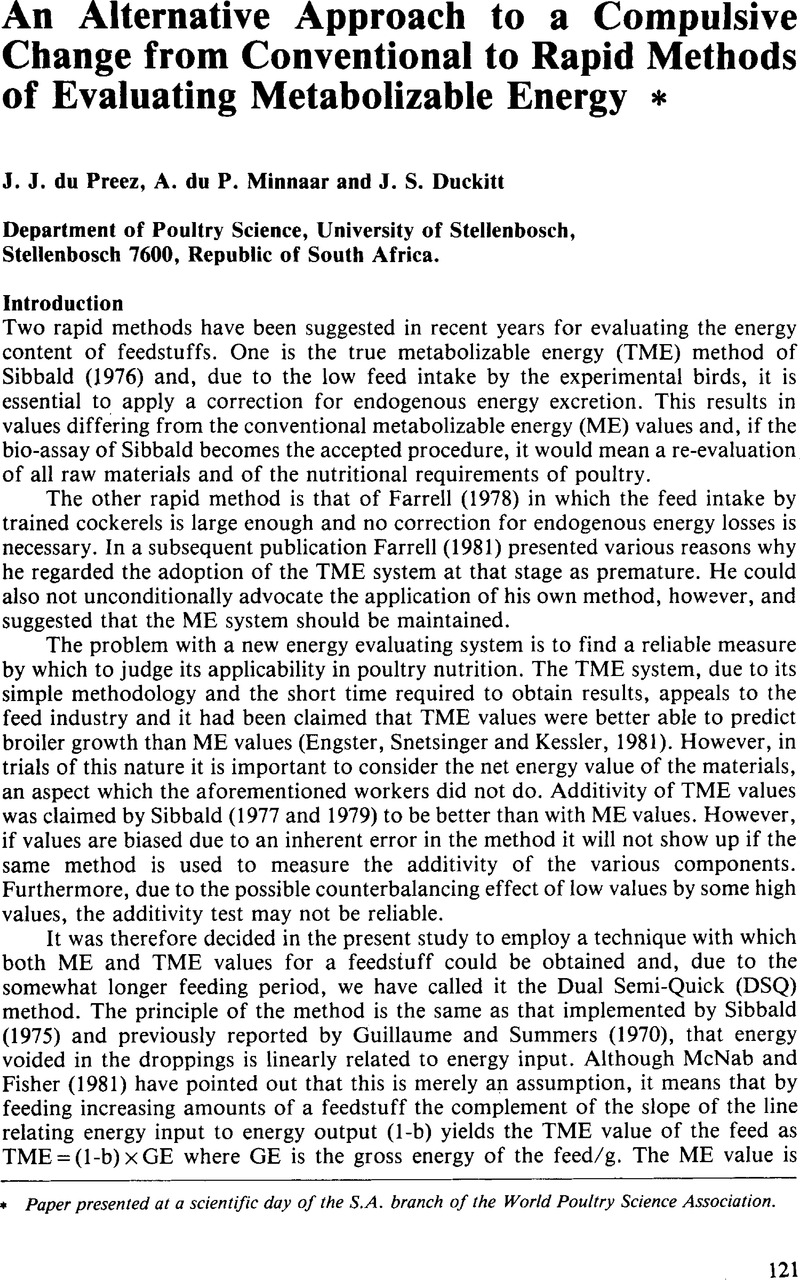Crossref Citations
This article has been cited by the following publications. This list is generated based on data provided by Crossref.
Sibbald, I. R.
1985.
The True Metabolizable Energy Bioassay as a Method for Estimating Bioavailable Energy in Poultry Feedingstuffs.
World's Poultry Science Journal,
Vol. 41,
Issue. 3,
p.
179.
DALE, N.M.
and
FULLER, H.L.
1986.
Repeatability of True Metabolizable Energy Versus Nitrogen Corrected True Metabolizable Energy Values.
Poultry Science,
Vol. 65,
Issue. 2,
p.
352.
FISHER, C.
and
McNAB, J.M.
1987.
Recent Advances in Animal Nutrition.
p.
3.
FISHER, C.
and
McNAB, J.M.
1989.
Recent Developments in Poultry Nutrition.
p.
54.
PESTI, G.M.
DALE, N.M.
and
FARRELL, D.J.
1989.
Research Note: A Comparison of Methods to Determine the Metabolizable Energy of Feather Meal.
Poultry Science,
Vol. 68,
Issue. 3,
p.
443.





